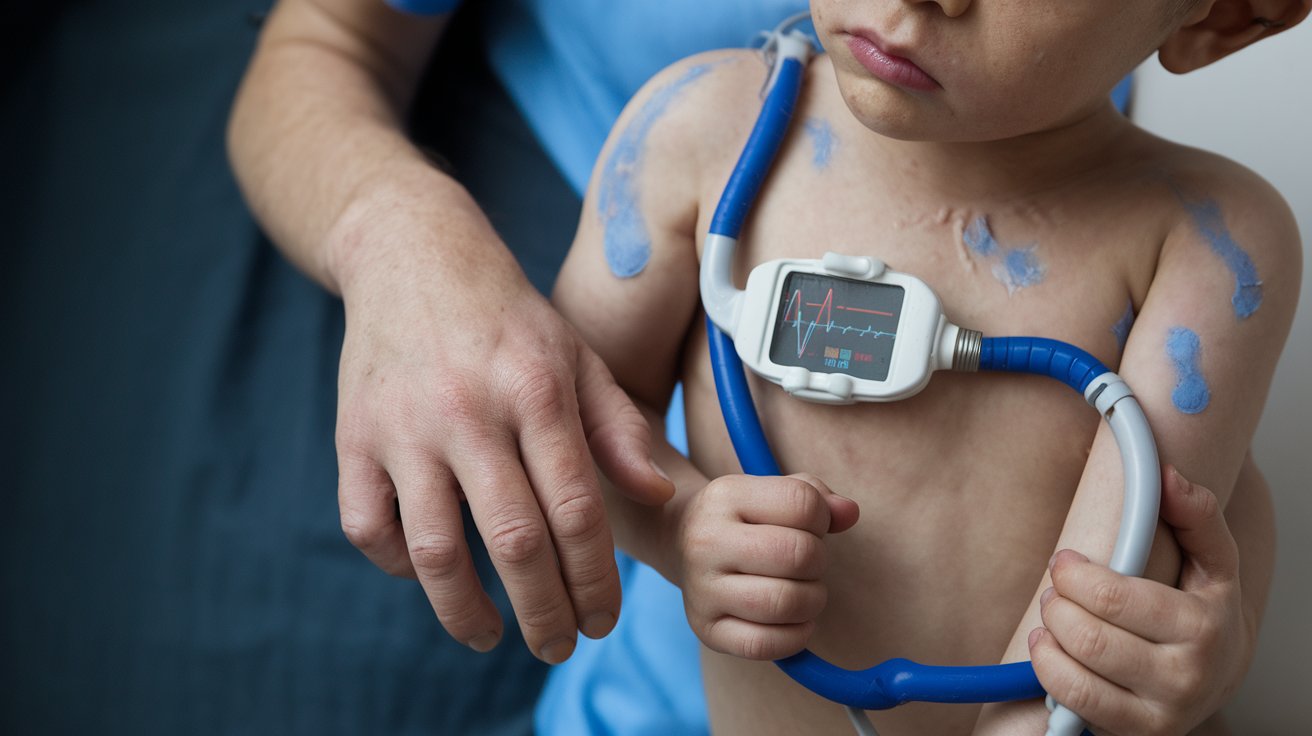
Congenital Heart Disease Radio Ulnar Synostosis Mental Retardation is a rare genetic disorder that affects multiple systems in the body. This condition combines heart defects, fusion of the radius and ulna bones in the forearm, and intellectual disabilities. Understanding this complex syndrome is crucial for those affected and their families. This blog post will provide 25 facts about this condition, shedding light on its causes, symptoms, and treatments. Whether you're a parent, caregiver, or simply curious, these facts will help you grasp the essentials of this rare disorder. Let's dive into the details and uncover what makes this condition unique.
Key Takeaways:
- 1. Congenital heart disease, radio ulnar synostosis, and mental retardation each have unique characteristics and require specialized care. Early diagnosis and comprehensive support are crucial for individuals with these conditions.
- 2. Multidisciplinary care involving different medical specialists, early intervention, and strong family support are key in managing the challenges of these complex conditions. Advocacy and awareness efforts also play a vital role in promoting inclusion and reducing stigma.
Understanding Congenital Heart Disease
Congenital heart disease (CHD) is a condition present at birth that affects the structure and function of the heart. It can range from simple defects to complex malformations. Here are some key facts about CHD:
- CHD is the most common birth defect, affecting nearly 1% of all live births.
- There are over 35 different types of CHD, including atrial septal defects, ventricular septal defects, and tetralogy of Fallot.
- CHD can be diagnosed before birth using fetal echocardiography, typically around the 18-24 week mark of pregnancy.
- Surgery is often required to correct severe CHD, sometimes within the first few days or months of life.
- Advances in medical technology have significantly improved survival rates for children with CHD, with many living into adulthood.
- Genetic factors play a role in CHD, though the exact cause is often unknown.
- Environmental factors such as maternal diabetes, smoking, and certain medications during pregnancy can increase the risk of CHD.
- Regular follow-up care is crucial for individuals with CHD to monitor heart function and manage any complications.
Exploring Radio Ulnar Synostosis
Radio ulnar synostosis is a rare congenital condition where the radius and ulna bones in the forearm are fused together. This fusion limits the ability to rotate the forearm. Here are some important facts:
- Radio ulnar synostosis can be unilateral or bilateral, meaning it can affect one or both arms.
- The condition is often diagnosed in early childhood, usually when a child starts to use their arms more actively.
- Surgical intervention is not always necessary, especially if the condition does not significantly impair daily activities.
- Physical therapy can help improve the range of motion and strengthen the muscles around the affected area.
- Genetic mutations are a known cause, though the condition can also occur sporadically without a family history.
- Associated syndromes such as Holt-Oram syndrome and Klinefelter syndrome can include radio ulnar synostosis as a feature.
- Early intervention and support can help children adapt and develop coping strategies for any limitations.
Understanding Mental Retardation
Mental retardation, now more commonly referred to as intellectual disability, involves limitations in intellectual functioning and adaptive behavior. Here are some key points:
- Intellectual disability affects about 1-3% of the population worldwide.
- The condition can be caused by genetic factors, such as Down syndrome, Fragile X syndrome, and phenylketonuria (PKU).
- Environmental factors like prenatal exposure to alcohol, infections, and malnutrition can also contribute to intellectual disability.
- Early diagnosis and intervention are crucial for improving outcomes and providing support.
- Special education programs and therapies can help individuals develop skills and achieve greater independence.
- Supportive services for families, including counseling and respite care, are important for managing the challenges associated with intellectual disability.
- Advocacy and awareness efforts aim to reduce stigma and promote inclusion for individuals with intellectual disabilities.
The Intersection of These Conditions
When congenital heart disease, radio ulnar synostosis, and intellectual disability occur together, it can present unique challenges. Here are some facts about this combination:
- Multidisciplinary care is essential, involving cardiologists, orthopedic specialists, and developmental pediatricians.
- Early and comprehensive evaluations can help identify the specific needs and appropriate interventions for each individual.
- Family support and education are critical in managing the complex care requirements and ensuring the best possible quality of life.
Final Thoughts on Congenital Heart Disease Radio Ulnar Synostosis Mental Retardation
Understanding Congenital Heart Disease Radio Ulnar Synostosis Mental Retardation helps shed light on the complexities of this rare condition. Awareness and knowledge are crucial for early diagnosis and intervention. This condition affects multiple systems in the body, making comprehensive care essential. Families and caregivers play a vital role in managing daily challenges and ensuring a better quality of life for those affected.
Medical advancements continue to improve outcomes, but support networks and resources remain invaluable. By staying informed and connected, individuals and families can navigate this journey with greater confidence. Remember, every bit of knowledge contributes to better care and understanding. Keep advocating for more research and support for those living with this condition.
Frequently Asked Questions
Was this page helpful?
Our commitment to delivering trustworthy and engaging content is at the heart of what we do. Each fact on our site is contributed by real users like you, bringing a wealth of diverse insights and information. To ensure the highest standards of accuracy and reliability, our dedicated editors meticulously review each submission. This process guarantees that the facts we share are not only fascinating but also credible. Trust in our commitment to quality and authenticity as you explore and learn with us.


